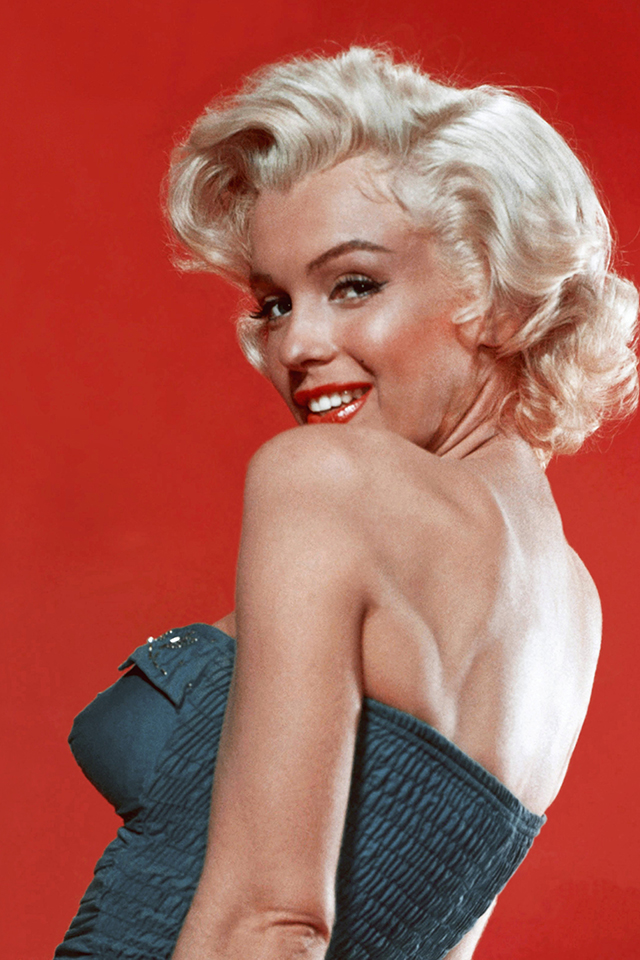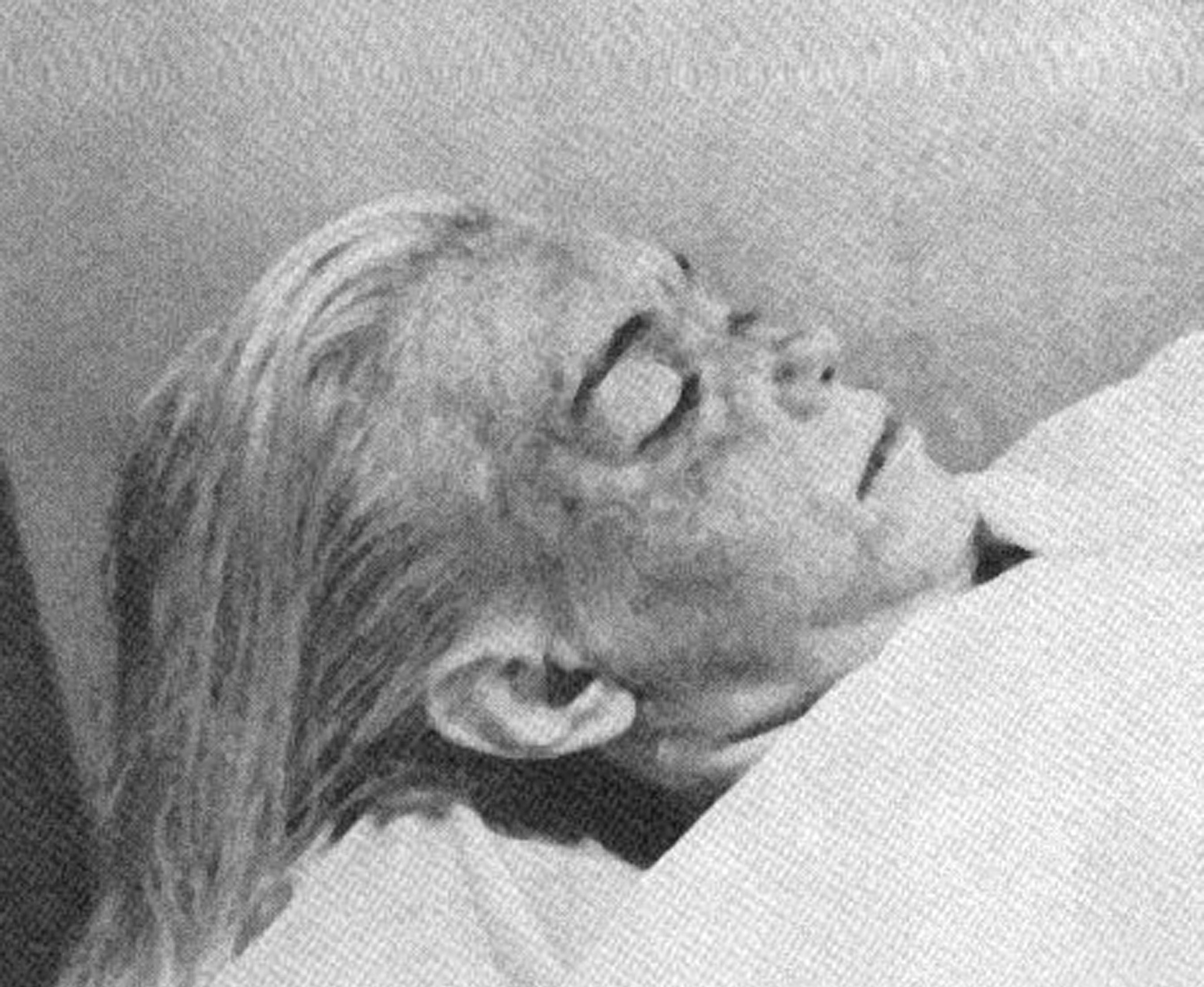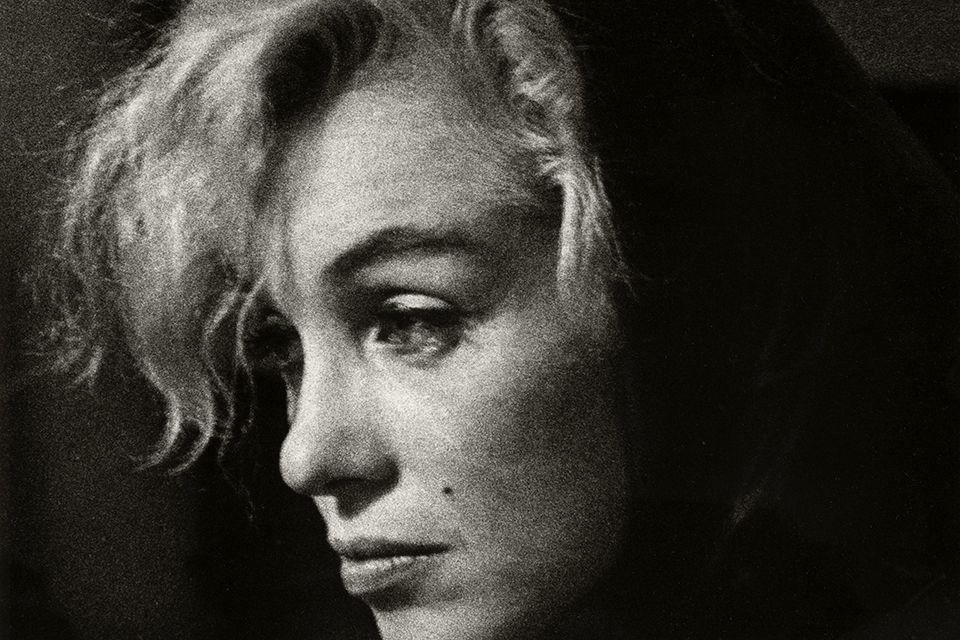IN 2017, OPIOID OVERDOSE officially became the leading cause of death for Americans under the age of 50. More than 2 million Americans are addicted to opioids, with costs for their care and treatment exceeding $55 billion yearly. Across the United States, more than 64,000 people died from opioid overdose in 2016, according to federal data.
Among the mothers, fathers, brothers, sisters, children, and friends lost to the plague are celebrities: Heath Ledger in 2008, Michael Jackson in 2009, Philip Seymour Hoffman in 2014, Prince in 2016, Tom Petty in 2017. One of the earliest — and most infamous — celebrity overdoses was Marilyn Monroe’s in the night of Aug. 4, 1962, or early the next morning. Abuse of prescription drugs has only risen since then.
Now anyone can die like Marilyn.
A Problem Since the Civil War
Today’s opioid crisis has no precedent, but Americans have been abusing drugs since the Civil War, when wounded soldiers were treated with morphine — an opiate to which many became addicted.
As all opiates do, morphine at first generally sickens users. But after exposure euphoria, tolerance, and finally addiction kick in. By 1914, America’s addiction to opium, morphine, and the stimulant cocaine was so widespread that the government enacted the nation’s first federal anti-drug law. The 1914 Harrison Act made it tougher to get these drugs.
Many addicts turned to doctors, who were happy to prescribe barbiturates, a new class of drugs that sedated by depressing the central nervous system. Considered “miracle drugs” by doctors and patients, barbiturates eased anxiety and depression and helped users sleep. Research later showed these compounds to be addictive, too, and over the long term to worsen depressive symptoms. By mid-century, drug companies were marketing no fewer than 30 barbiturates, with Amytal, Nembutal, and Seconal the most popular. After World War II, “goofballs” were everywhere — and cheap. A dozen pills went for about $1.
GET HISTORY’S GREATEST TALES—RIGHT IN YOUR INBOX
Subscribe to our HistoryNet Now! newsletter for the best of the past, delivered every Monday and Thursday.
Hollywood Excess
Then, as now, abuse of drugs was nationwide. But if prescription drug abuse had an epicenter in the 1950s, it was in Los Angeles at Schwab’s Pharmacy on Sunset Boulevard, where Orson Welles shopped, Ava Gardner worked the soda fountain, and F. Scott Fitzgerald reportedly had a heart attack buying cigarettes. At the pharmacy counter, celebrities and regular folks could get their prescriptions filled. In 1950s Hollywood, that meant barbiturates for nerves and amphetamines for energy and weight loss.
One studio employee claimed that in those days most Hollywood actors were on prescription drugs. While filming The Wizard of Oz, Judy Garland, 17, was plied with amphetamines to give her energy and keep her weight down. When uppers caused insomnia, Garland was prescribed barbiturates to counter their effects. Studio doctors handed out pills to countless stars, including Lauren Bacall and Lucille Ball. A 20th Century Fox physician who treated both Garland and Monroe recalled that “pills were seen as another tool to keep the stars working. The doctors were caught in the middle. If one doctor would not prescribe, there was always another who would.”
And there were other sources. The illicit drug scene — detailed in Kenneth Anger’s 1965 exposé Hollywood Babylon — was inescapable. Pills were distributed like candy at parties and used as chips in poker games. Stars drank heavily, smoked marijuana, used cocaine, and tried LSD. Everyone had a connection.
When Marilyn Monroe, 20, arrived on the Fox lot as a contract actor in summer 1946, she was intent on a career, not a drug habit. She did all she could to get producers’ attention. She studied actors. She shadowed makeup artists. She befriended publicists. Focus paid off: from 1950’s The Asphalt Jungle to 1961’s The Misfits, she starred in 23 pictures that grossed at least $200 million. Women imitated her bottle-blonde hair, hourglass figure, and signature red lips. She counted as friends Marlon Brando, Ella Fitzgerald, and Frank Sinatra.
Yet, sometime in night on Aug. 4 or early in the morning of Aug. 5, 1962, Marilyn Monroe was found naked and alone, dead on her bed amid pill bottles, phone at hand. Two days prior, she had filled two prescriptions for Nembutal — a tranquilizer often prescribed for insomnia and anxiety. The coroner declared her death a probable suicide by overdose. Tabloid stories and conspiracy theories swirled, but one thing was sure: Marilyn was an addict, and addiction killed her, intentional or not.
Marilyn MOnroe’s Sad Life
Born Norma Jeane Mortenson in Los Angeles in 1926, Marilyn had a tumultuous girlhood. Her mother, Gladys, turned her over to foster parents before she was a month old. Gladys visited infrequently, and, when she did, showed little affection. “She never kissed me or held me in her arms,” Marilyn recalled. Marilyn was seven when Gladys was institutionalized for a breakdown. As a girl, Marilyn, who never knew her father, daydreamed about a handsome daddy — perhaps dark-haired and looking like Clark Gable—who would pick her up after school.
Left largely on her own in foster homes and orphanages, she fell victim to sexual predators. Biographer Lois Banner says “the sexual abuse she endured as a child was formative in molding her adult character,” leaving Monroe an “angry, frightened adult.” Marilyn worried about her family history. Her maternal grandmother died in an asylum after years of manic depression; her maternal grandfather was diagnosed with dementia.
“I wish I knew why I am so anguished,” Marilyn wrote to a friend. “I think maybe I’m crazy like all the other members of my family.”
Bad Advice
Physical problems, notably endometriosis, intensified Marilyn’s menstrual periods and also caused pregnancy complications that led to miscarriages. A doctor suggested she cope with cramps by drinking vodka. Her drink of choice, Champagne — Dom Perignon 1953 — failed to dull her emotional pain and performance anxiety. By the early 1950s, she was regularly downing barbiturates to take the edge off and help her sleep. Like many users of Nembutal, Seconal, and their cousin drugs, she often felt lethargic, so she coupled these pills with amphetamines, which also kept her slim.
In interviews with screenwriter Ben Hecht at the Hotel Beverly Hills in 1954, Monroe hinted at her despair and even joked, “When you’re young and healthy you can plan on Monday to commit suicide, and by Wednesday you’re laughing again.” More ominously, she referred to herself as “the kind of girl they found dead in a hall bedroom with an empty bottle of sleeping pills in her hands.”
Still, Marilyn found her professional footing, even starring with two of the era’s most famous actresses — Betty Grable and Lauren Bacall — in 1953’s How to Marry a Millionaire. In 1954, she married New York Yankees slugger Joe DiMaggio, who would remain devoted to her all his life, despite their divorce 274 days later. Marilyn moved to New York and began studying at Actors Studio on West 44th Street, where Lee Strasberg trained followers in method acting.

Method actors drew on experience to bring raw emotion to performances. When students had trouble working through harsh memories, Strasberg might recommend psychoanalysis. At his urging, Marilyn began to see a psychoanalyst. To address pain unearthed excavating her childhood, Marilyn turned to reliable friends — during the day Dexamyl, a stimulant/sedative hybrid, and at night sleeping pills, washed down with booze.
Back IN NYC
In New York, Marilyn reconnected with old love interest Arthur Miller. The movie star and the playwright married on June 29, 1956. She joined his circles, befriending Truman Capote and Saul Bellow, vacationing in Long Island and Connecticut.
But Marilyn’s habits persisted. She had increasing anxiety over acting that she allayed with drugs. Miller became known among Marilyn’s friends as her “pill monitor.” He doled out capsules and tablets and tried to watch her intake. When his wife overdosed on Nembutal in September 1957, Miller called paramedics, who saved her life.
By 1959, Hollywood gossips were suggesting the Thermos she held between takes making Some Like It Hot held vodka, not coffee. Another overdose required a stomach-pumping. Monroe wrote of her fear of learning lines: “… maybe [I] won’t be able to learn them, maybe I’ll make mistakes, people will either think I’m no good or laugh or belittle me or think I can’t act.”
At Miller’s suggestion, Marilyn began working with psychoanalyst Marianne Kris. Aided by another prescription for barbiturates, Marilyn muddled through. During this period some said she feared solitude and the dark.
On stays in Los Angeles, she began seeing Beverly Hills analyst Dr. Ralph Greenson. She was taking multiple barbiturates, including phenobarbital, Amytal, and Pentothal. Some sources say she was injecting the opiate Demerol. Worried about chemical interactions as well as overdose, Dr. Greenson, who had many stars as clients, tried to get her off the drugs. He failed, and ironically continued to write prescriptions for Marilyn and other stars as well. Greenson later came in for scrutiny and complaints about unethical practices with patients, including Monroe, but he was also a product of his time.
Miracle Cures
In that era, when psychological treatment was the province of the very privileged or the very ill, pharmaceuticals seemed to hold great promise for treating mental illness. More patients got relief without undergoing lobotomy, previously the recommended treatment. But the medical community knew prescription pharmaceuticals were addictive. Studies in the 1950s showed the best treatment for such addictions to be hospital detox followed by inpatient psychological care. Those convicted under federal drug laws could be forced to undergo such treatment, but Marilyn’s drug use never became a criminal matter. Her treatments were strictly voluntary.
The Monroe-Miller relationship was disintegrating. Even so, the couple collaborated on a star-laden John Huston film, The Misfits. Miller had written the lead role for his spouse, but Marilyn complained that the script favored male co-stars Clark Gable, Montgomery Clift, and Eli Wallach. At the location in the Nevada desert, temperatures regularly reached 108 degrees. Even with an 11 a.m. call time, Marilyn regularly arrived late. She and Miller stopped speaking to each other. She needed her pills more than ever. Should the production company doctor balk at writing prescriptions, Marilyn would see agreeable doctors in Reno. Mid-shoot, the producers sent her to Los Angeles for two weeks to detoxify.
“She was doomed,” Huston said later. “She was incapable of rescuing herself or being rescued by anyone else. And it affected her work.”
Clark Gable Dies
Shooting ended on Nov. 4, 1960; within days, Gable had a heart attack. On Nov. 11, Marilyn’s press secretary announced her separation from Miller, who later said he had married Marilyn thinking she was “the happy girl that all men loved,” but found that “with all her radiance, she was surrounded by a darkness that perplexed me.” On Nov. 16, Gable died.
A devastated Marilyn blamed herself and her on-set antics for her father figure’s demise, a logic also expressed in gossip columns. In interviews with journalist W.J. Weatherby, Monroe’s despondency showed. She talked about wanting to write a will.
“Can’t tell you why,” she mused, “but it’s been on my mind.”
She talked about her insomnia, and about taking sleeping pills. She mentioned suicide:
“I tried it once and I was kinda disappointed it didn’t work.”
She isolated herself. When reviewers bashed The Misfits — The New York Times called Monroe’s performance “blank and unfathomable” — she stayed in bed all day, curtains closed.
Isolated and in Pain
Fearing another suicide attempt, analyst Marianne Kris convinced Monroe to sign into New York City’s Payne Whitney clinic for another try at detox. Marilyn quickly saw the place as the psychiatric ward it was, with barred windows, locked doors, and staff eyes always on patients. The halls reverberated with screams. Frantic, Marilyn smashed a window and threatened to slit her wrists with a shard of glass. This got her moved into isolation in a cinderblock cell on what she later called “the dangerous floor.” Desperate, she contacted Lee Strasberg.
“I’m sure to end up a nut if I stay in this nightmare,” she wrote. “Please help me Lee, this is the last place I should be.”
The acting coach did not come. Nor did Kris. After four days, ex-husband Joe DiMaggio secured Marilyn’s release.
Within weeks, she was in Los Angeles, regularly seeing Greenson. The psychoanalyst had diagnosed his famous patient as a “borderline paranoid schizophrenic.” He arranged for nurses to supervise her daily activities. He tried to wean Monroe off Nembutal. He suggested she buy a house. In tony Brentwood, she purchased a two-bedroom Spanish-style villa. An inscription in Latin at the entry read Cursum Perificio, “I am finishing my journey.” To furnish the house, Marilyn made a shopping trip to Mexico. She began working on a memoir with photographer George Barris.
Blue Birthday
Monroe was to star with Dean Martin in a comedy, Something’s Got to Give. A sinus infection kept Marilyn from making her first on-set call, a bump that became a pattern. When she was not arriving late, she was having her driver cruise the lot. Once, before going on camera, she vomited, which producer Henry Weinstein attributed to “sheer, primal terror.” Something’s schedule slid a week behind. Marilyn infuriated studio executives by leaving for New York to sing “Happy Birthday” at Madison Square Garden on May 19 to President John F. Kennedy, a sometime paramour.
On June 1, Monroe turned 36, a milestone marked rudimentarily on set with grocery-store Champagne, cake, and crew members singing “Happy Birthday.” That weekend found Marilyn in bed alone, in the dark, with her pills. Monday she called in sick. By Wednesday, the studio had shut down Something’s Got to Give and was suing an inconsolable Monroe for $500,000.
Hoping to cheer up his colleague, Dean Martin planned a party for her that weekend. Marilyn stayed home with her prescriptions, written by Greenson and another doctor: Nembutal and the painkiller Sulfathalidine, as well as chloral hydrate, an insomnia treatment known on the street “Mickey Finn knockout drops.” She may have stockpiled additional controlled substances while in Mexico, where drug laws were laxer than in the United States.
Final Sessions
Marilyn and photographer Barris met for a mid-July session. As the sun was setting off Santa Monica on Friday, July 13, 1962, Barris made one last exposure. In their weeks together, his subject seemed disturbed, he said later.
“Marilyn would now and then lapse into a blue mood,” the photographer said. “She would cover her face with both hands, lower her head for a moment or two and then, smiling, become her old self again — cheerful and clowning for the camera. But I could see a residual tear or two.”
Later in July, Marilyn returned to Santa Monica for a beach house party that actors Warren Beatty and Natalie Wood also attended. Both performers recalled a despondent, agitated Monroe. The star spent much of the night in a corner.
“Thirty-six, thirty-six,” she muttered to herself. “It’s all over.”
Marilyn had reached the age at which Betty Grable, her co-star in How to Marry a Millionaire, had been pushed out of Hollywood.
On Aug. 3, LIFE magazine writer Richard Meryman interviewed Monroe at home in Brentwood. She told the journalist she felt herself to be “one of the world’s most self-conscious people.” Though still beautiful, Marilyn’s face was “pasty and lifeless looking,” Meryman said. A follow-up visit could not end quickly enough for him.
“I didn’t like the atmosphere in that house,” he said. “There was something creepy, something sick about it.”
Marilyn deteriorated. Some suggest she was anguished over failed relationships with the Kennedys — first Jack, then Bobby. On Aug. 4, a friend of the political family warned Monroe to leave the Kennedys alone. Marilyn asked Dr. Greenson to make a house call. After a few hours of therapy, the star seemed calmer, but when she proposed to stroll Santa Monica Pier, Greenson advised she have her housekeeper take her for a drive. Around 8 p.m., Marilyn decided she was in for the night. In her bedroom she put on Sinatra records and phoned friends. Most were out.

An Idol Departs
Early on Sunday, the housekeeper, hearing music and seeing her employer’s bedroom lights on, knocked at Monroe’s bedroom door to no response. The door was locked. A call brought Dr. Greenson. Around 3:30 a.m., he broke into Marilyn’s room to find her “face down on the bed, bare shoulders exposed … the phone clutched fiercely in her right hand.” Marilyn was not breathing. About the room were scattered pill bottles, including two labeled for anti-anxiety drug Librium and two for the sedative chloral hydrate, along with containers of analgesic Sulfathalidine and the sedative Nembutal. The death certificate would state that Marilyn had died of “acute barbiturate poisoning,” and was a “probable suicide.” An autopsy found her system to contain 10 times the standard dosage of Nembutal.
It is impossible to know whether Marilyn Monroe took her own life or was self-medicating and miscalculated. Many friends insisted she died by accident. But in her final interview, Marilyn called celebrity “only a temporary and partial happiness,” adding in an aside on her career that “it might be kind of a relief to be finished.” Days later, she was.
historynet magazines
Our 9 best-selling history titles feature in-depth storytelling and iconic imagery to engage and inform on the people, the wars, and the events that shaped America and the world.






